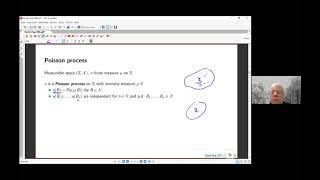R-process
In nuclear astrophysics, the rapid neutron-capture process, also known as the r-process, is a set of nuclear reactions that is responsible for the creation of approximately half of the atomic nuclei heavier than iron, the "heavy elements", with the other half produced by the p-process and s-process. The r-process usually synthesizes the most neutron-rich stable isotopes of each heavy element. The r-process can typically synthesize the heaviest four isotopes of every heavy element, and the two heaviest isotopes, which are referred to as r-only nuclei, can be created via the r-process only. Abundance peaks for the r-process occur near mass numbers A = 82 (elements Se, Br, and Kr), A = 130 (elements Te, I, and Xe) and A = 196 (elements Os, Ir, and Pt). The r-process entails a succession of rapid neutron captures (hence the name) by one or more heavy seed nuclei, typically beginning with nuclei in the abundance peak centered on 56Fe. The captures must be rapid in the sense that the nuclei must not have time to undergo radioactive decay (typically via β− decay) before another neutron arrives to be captured. This sequence can continue up to the limit of stability of the increasingly neutron-rich nuclei (the neutron drip line) to physically retain neutrons as governed by the short range nuclear force. The r-process therefore must occur in locations where there exists a high density of free neutrons. Early studies theorized that 1024 free neutrons per cm3 would be required, for temperatures about 1 GK, in order to match the waiting points, at which no more neutrons can be captured, with the atomic numbers of the abundance peaks for r-process nuclei. This amounts to almost a gram of free neutrons in every cubic centimeter, an astonishing number requiring extreme locations. Traditionally this suggested the material ejected from the reexpanded core of a core-collapse supernova, as part of supernova nucleosynthesis, or decompression of neutron-star matter thrown off by a binary neutron star merger in a kilonova. The relative contribution of each of these sources to the astrophysical abundance of r-process elements is a matter of ongoing research. A limited r-process-like series of neutron captures occurs to a minor extent in thermonuclear weapon explosions. These led to the discovery of the elements einsteinium (element 99) and fermium (element 100) in nuclear weapon fallout. The r-process contrasts with the s-process, the other predominant mechanism for the production of heavy elements, which is nucleosynthesis by means of slow captures of neutrons. In general, isotopes involved in the s-process have half-lives long enough to enable their study in laboratory experiments, but this is not typically true for isotopes involved in the r-process. The s-process primarily occurs within ordinary stars, particularly AGB stars, where the neutron flux is sufficient to cause neutron captures to recur every 10–100 years, much too slow for the r-process, which requires 100 captures per second. The s-process is secondary, meaning that it requires pre-existing heavy isotopes as seed nuclei to be converted into other heavy nuclei by a slow sequence of captures of free neutrons. The r-process scenarios create their own seed nuclei, so they might proceed in massive stars that contain no heavy seed nuclei. Taken together, the r- and s-processes account for almost the entire abundance of chemical elements heavier than iron. The historical challenge has been to locate physical settings appropriate for their time scales. (Wikipedia).



















